-
main-collection-product-grid
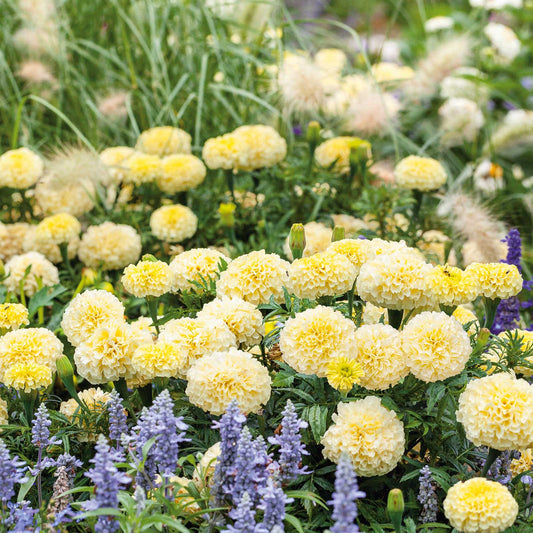
African Marigold Seeds - Moonlight
Pale yellow blooms will illuminate your summer gardenAfrican Marigold Seeds - Moonlight
Pale yellow blooms will illuminate your summer gardenRegular price As Low As $4.79Regular priceUnit price per -
main-collection-product-grid
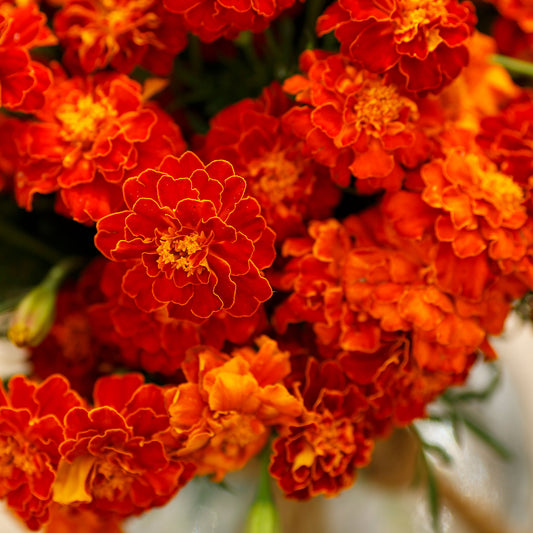
French Marigold Seeds - Red Cherry
An early season cultivar, these scarlet flowers bloom from spring until frostFrench Marigold Seeds - Red Cherry
An early season cultivar, these scarlet flowers bloom from spring until frostRegular price As Low As $4.79Regular priceUnit price per -
main-collection-product-grid
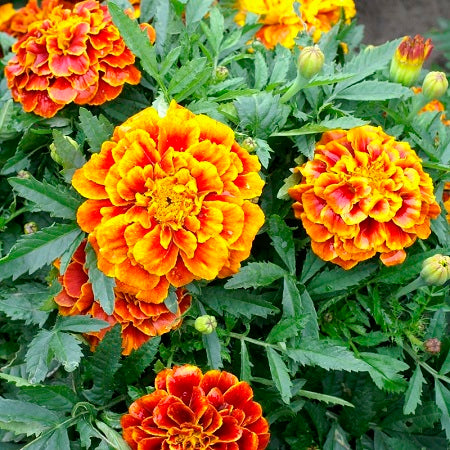
French Marigold Seeds - Queen Sophia
A great companion plant for tomatoes, this marigold is regal and dignifiedFrench Marigold Seeds - Queen Sophia
A great companion plant for tomatoes, this marigold is regal and dignifiedRegular price As Low As $4.79Regular priceUnit price per -
main-collection-product-grid
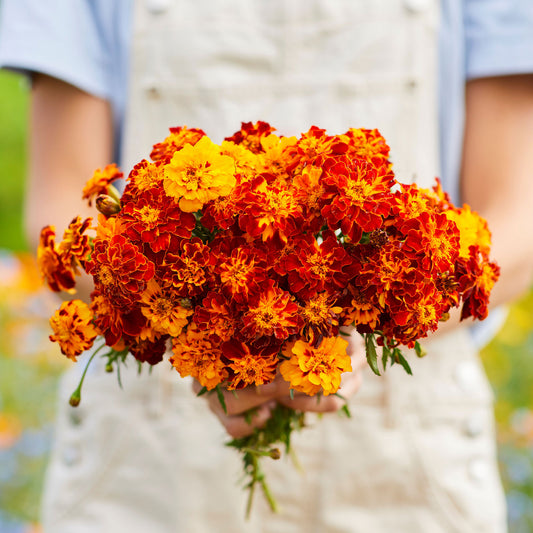
French Marigold Seeds - Panther
Nematodes, beware—this cultivar is known for its pest-killing propertiesFrench Marigold Seeds - Panther
Nematodes, beware—this cultivar is known for its pest-killing propertiesRegular price As Low As $4.79Regular priceUnit price per -
main-collection-product-grid
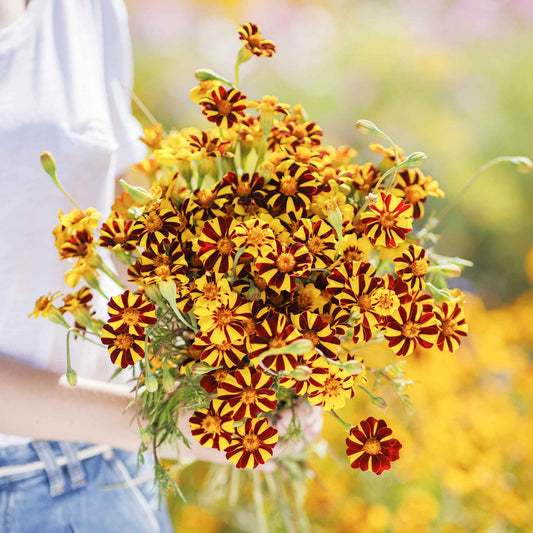
French Marigold Seeds - Court Jester
Red and yellow striped petals look great with tomato plants and keep pests awayFrench Marigold Seeds - Court Jester
Red and yellow striped petals look great with tomato plants and keep pests awayRegular price As Low As $4.79Regular priceUnit price per -
main-collection-product-grid
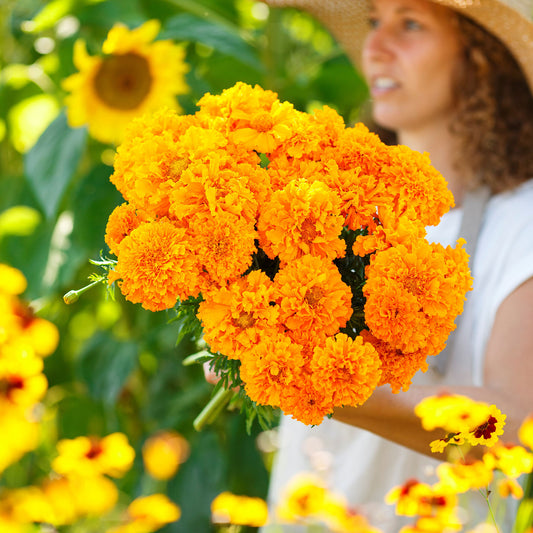
African Marigold Seeds - Hawaii
Sturdy stems and rich orange blooms characterize this popular varietyAfrican Marigold Seeds - Hawaii
Sturdy stems and rich orange blooms characterize this popular varietyRegular price As Low As $4.49Regular priceUnit price per -
main-collection-product-grid
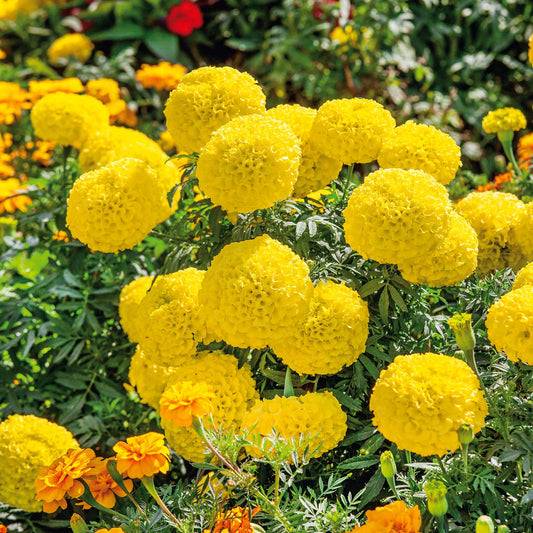
African Marigold Seeds - Mary Helen
Canary yellow, strongly-scented blooms are known to repel pestsAfrican Marigold Seeds - Mary Helen
Canary yellow, strongly-scented blooms are known to repel pestsRegular price As Low As $4.49Regular priceUnit price per -
main-collection-product-grid
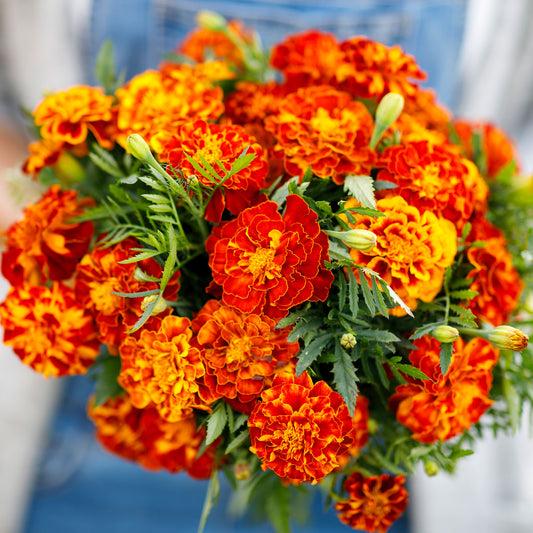
French Marigold Seeds - Sparky Mix
Flowers are wide and rippled—great addition to a kid's gardenFrench Marigold Seeds - Sparky Mix
Flowers are wide and rippled—great addition to a kid's gardenRegular price As Low As $4.49Regular priceUnit price per -
main-collection-product-grid
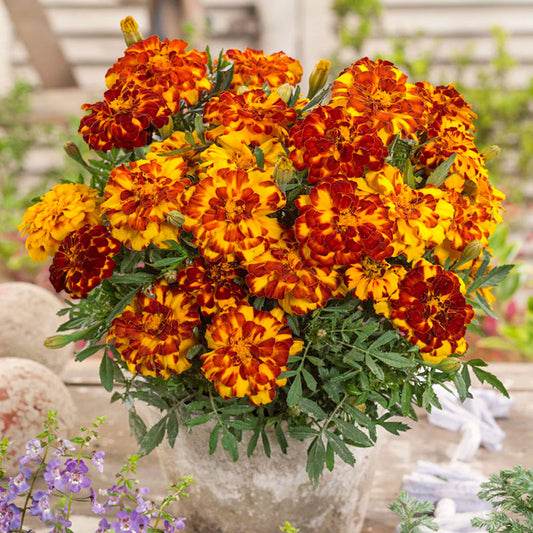
French Marigold Seeds - Bolero
One of our top-three bestselling marigolds for its vibrant bicolored bloomsFrench Marigold Seeds - Bolero
One of our top-three bestselling marigolds for its vibrant bicolored bloomsRegular price As Low As $4.49Regular priceUnit price per -
main-collection-product-grid
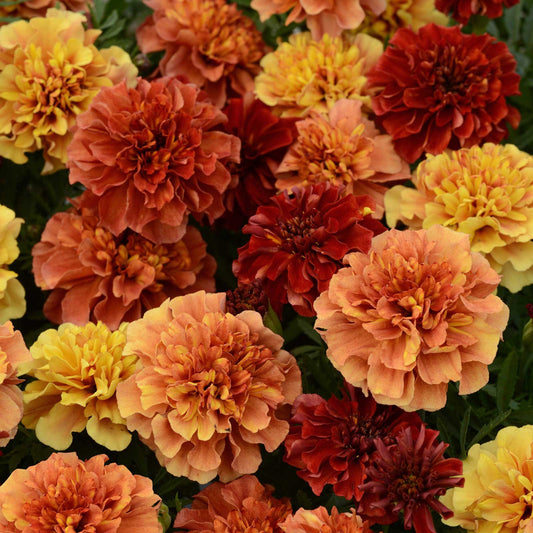
Marigold Seeds - Strawberry Blonde
Bloom colors actually change with the weatherMarigold Seeds - Strawberry Blonde
Bloom colors actually change with the weatherRegular price $6.29Regular priceUnit price per -
main-collection-product-grid
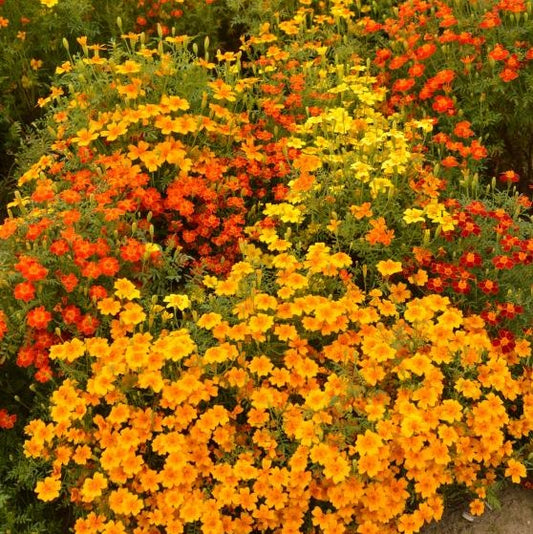
Marigold Seeds - Starfire Mix
Dainty blossoms and fern-like foliage set this variety apartMarigold Seeds - Starfire Mix
Dainty blossoms and fern-like foliage set this variety apartRegular price As Low As $4.99Regular priceUnit price per -
main-collection-product-grid
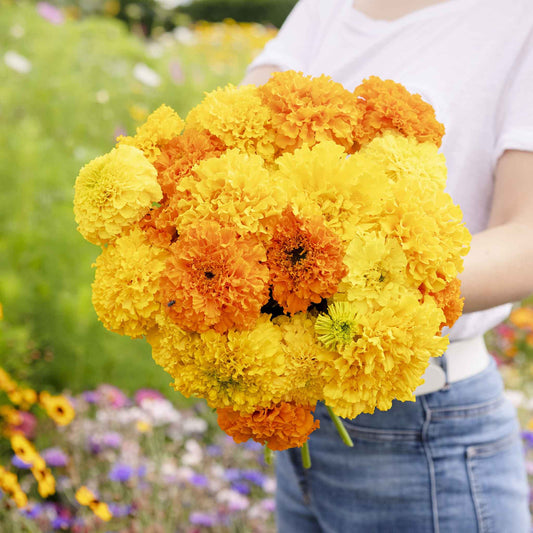
African Marigold Seeds - Crackerjack Mix
The tallest marigolds we offer, in classic colorsAfrican Marigold Seeds - Crackerjack Mix
The tallest marigolds we offer, in classic colorsRegular price As Low As $4.49Regular priceUnit price per -
main-collection-product-grid
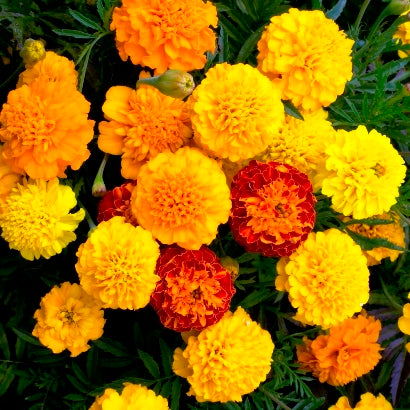
French Marigold (Dwarf) Seeds - Petite Mix
Small but loud, these miniature blooms are a perfect fit for small spacesFrench Marigold (Dwarf) Seeds - Petite Mix
Small but loud, these miniature blooms are a perfect fit for small spacesRegular price As Low As $4.49Regular priceUnit price per -
main-collection-product-grid
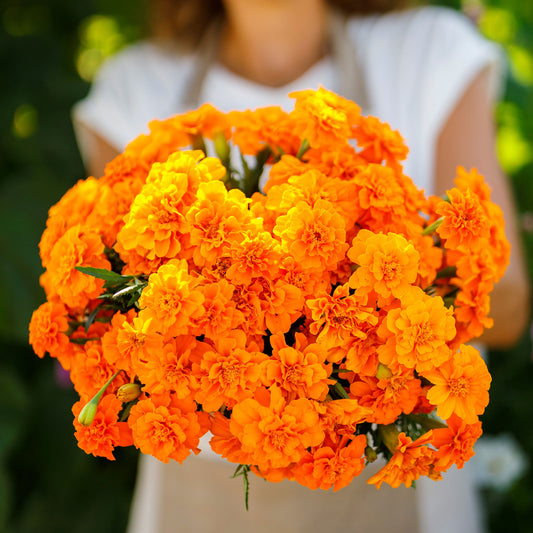
French Marigold (Double) Seeds - Tangerine
Heirloom annual with fully double orange blooms that attract beneficial insectsFrench Marigold (Double) Seeds - Tangerine
Heirloom annual with fully double orange blooms that attract beneficial insectsRegular price As Low As $4.49Regular priceUnit price per -
main-collection-product-grid
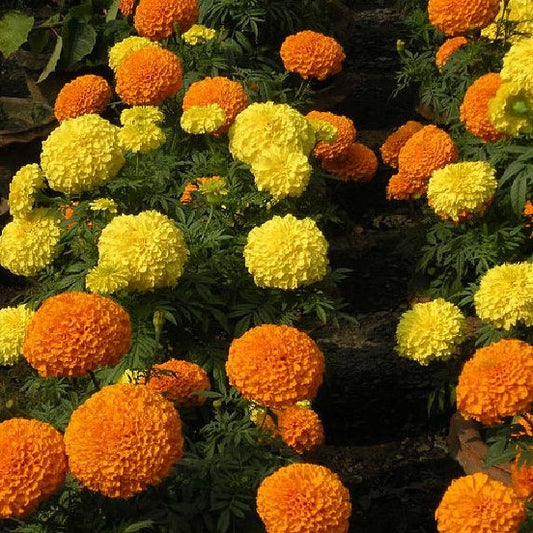
African Marigold Seeds - Sugar & Spice
This perfect pairing of orange and yellow blooms is a garden stapleAfrican Marigold Seeds - Sugar & Spice
This perfect pairing of orange and yellow blooms is a garden stapleRegular price As Low As $4.79Regular priceUnit price per -
main-collection-product-grid
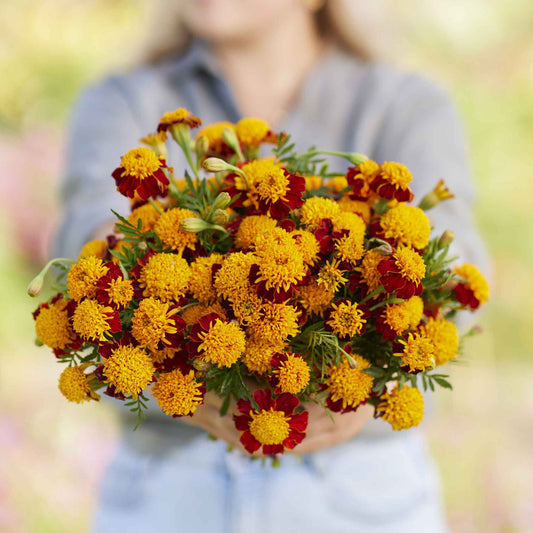
French Marigold (Double) Seeds - Tiger Eyes
Exotic two-toned flowers make a dramatic addition to bouquetsFrench Marigold (Double) Seeds - Tiger Eyes
Exotic two-toned flowers make a dramatic addition to bouquetsRegular price As Low As $4.49Regular priceUnit price per
Grow gorgeous marigolds from seed
- 29 vibrant marigold varieties
- Thrive in a variety of soils and conditions
- Fragrant blooms attract native pollinators and beneficial insects
- Dry beautifully in gorgeous hues of deep orange, golden yellow, lemon yellow, and cherry red
the history of marigolds
Native to North and South America, marigolds hold so much significance in many cultures. Marigolds are an important part of Dia de Los Muertos celebrations across the world—the flowers are placed at altars to honor and celebrate loved ones who have passed. Ironically, cultivated marigolds are either French, African, or Signet. French and Signet cultivars are more compact plants, usually not growing over a foot, but African marigolds may grow as tall as four feet, depending on the variety! Eden Brothers has selected the best heirloom and open-pollinated African and French varieties based on variables of production, disease resistance, and drought tolerance.
Marigold seeds can be direct seeded after the last frost. These heat-loving annuals bloom best with full sun in well-draining, fertile soil, but marigolds will happily make a home anywhere and are drought tolerant once established. Choose a planting site and cast marigold seed, then use a rake to lightly cover the seeds. Be careful not to heap too much soil over the seeds, as marigolds need light to germinate. Water the soil well, and wait. Once the seedlings sprout and have begun to grow true leaves, thin the seedlings to nine-inch spacing.
planting your own marigold seeds
Start marigold seeds indoors two months before the last spring frost. Transplant seedlings out after all danger of frost has passed, and space plants at nine inches. Plant African marigold varieties outside as early as possible to allow the plants to fully mature before the first killing frost. French marigolds have a longer planting window, as the plants mature more quickly.
Keep an eye on the weather—marigolds are drought tolerant but will need a drink if it hasn’t rained considerably in more than two weeks. Deadhead spent flowers to keep your marigold plants producing beautiful blooms all season long. Fertilizing marigolds isn’t really necessary—these hardy plants put on a show regardless!
Marigolds are fabulous for dried flowers. Harvest the stems, or pop off the heads, and allow to dry in a cool, dark place for two to three weeks. Flowers will retain their vibrant colors if kept out of direct sunlight.
pest repellant marigolds
Because of their innate ability to repel common pests like cabbage worms and deer, plant marigolds near your susceptible crops, and their strong scent will deter pests while attracting beneficial insects, including aphid-eating ladybugs.
Don’t be overwhelmed by all the vibrant marigold varieties to choose from—settle for a few of each! Be sure to snag a couple of tall African marigolds as border plants, and pick a few French marigolds for your container garden. For more information about planting, growing, and harvesting marigold seeds, see the Marigold Seeds Planting Guide.















